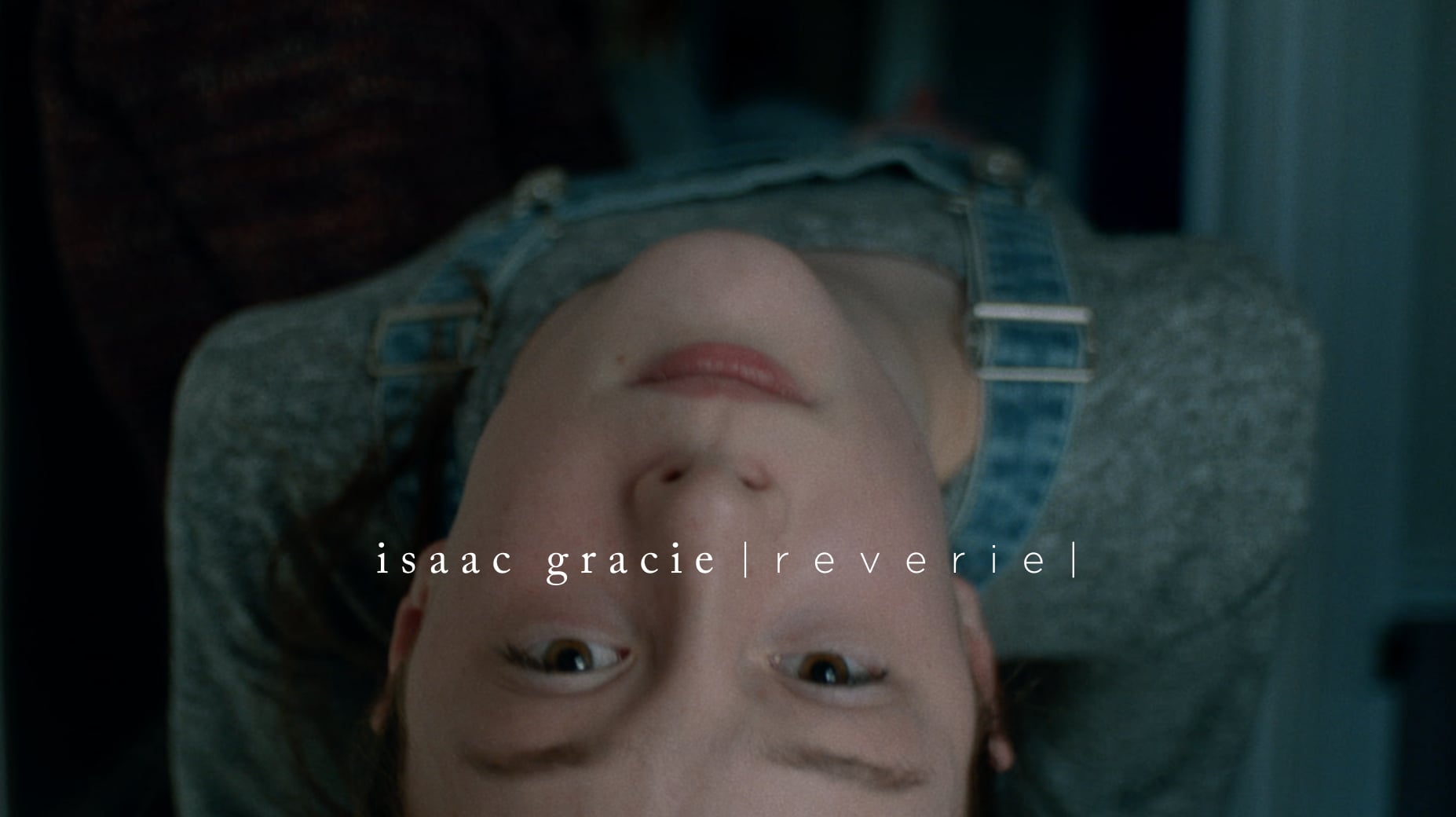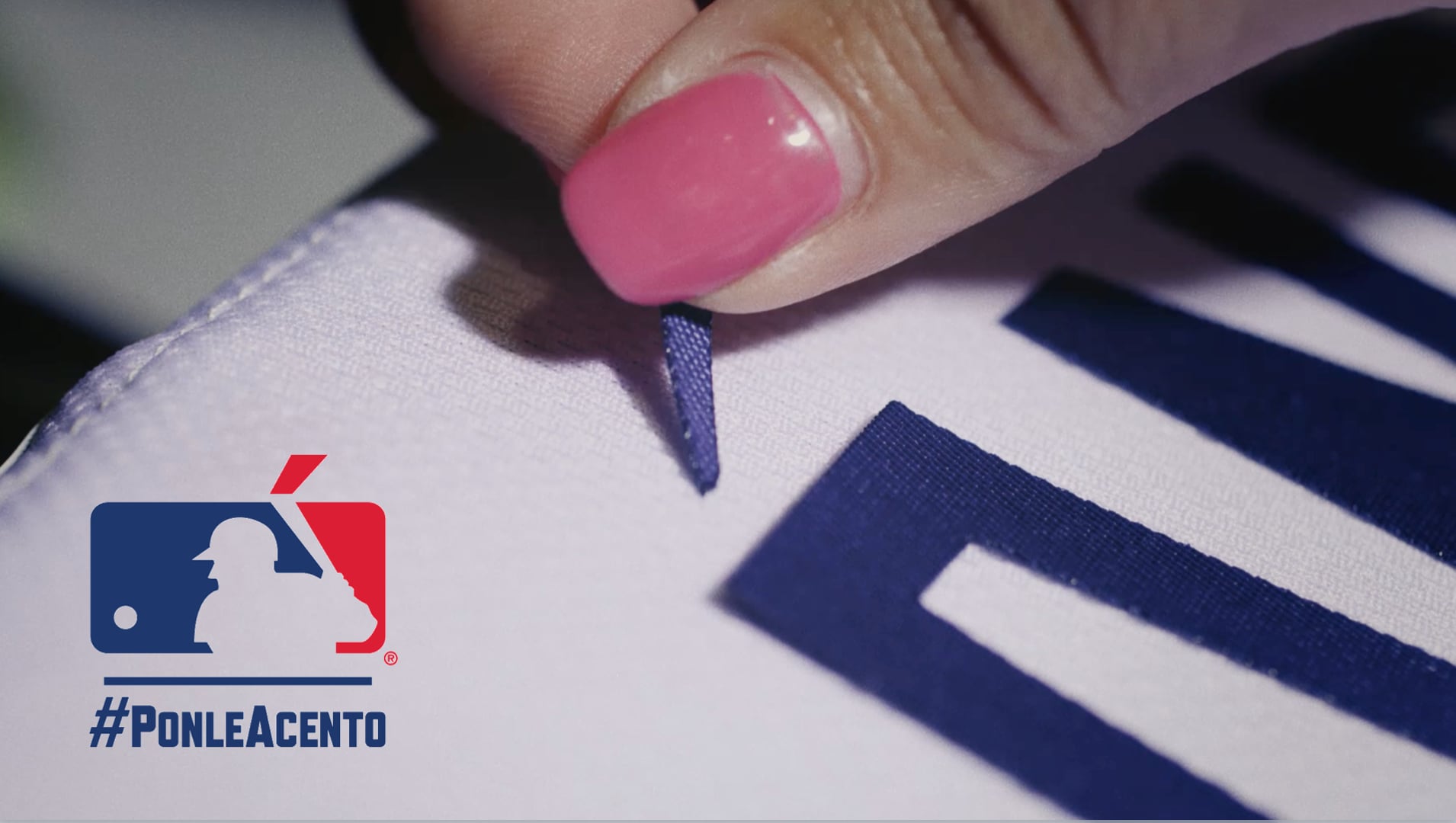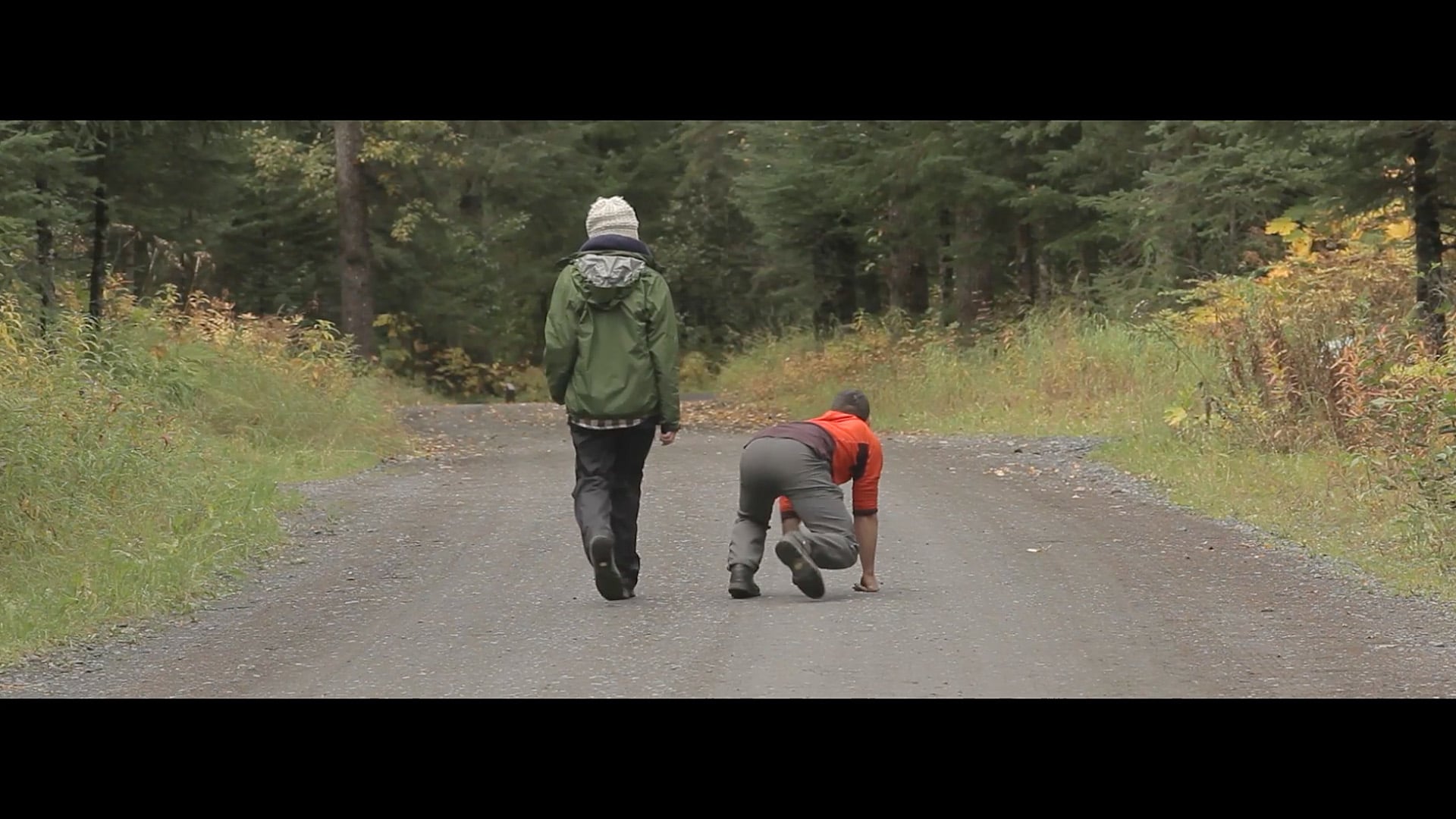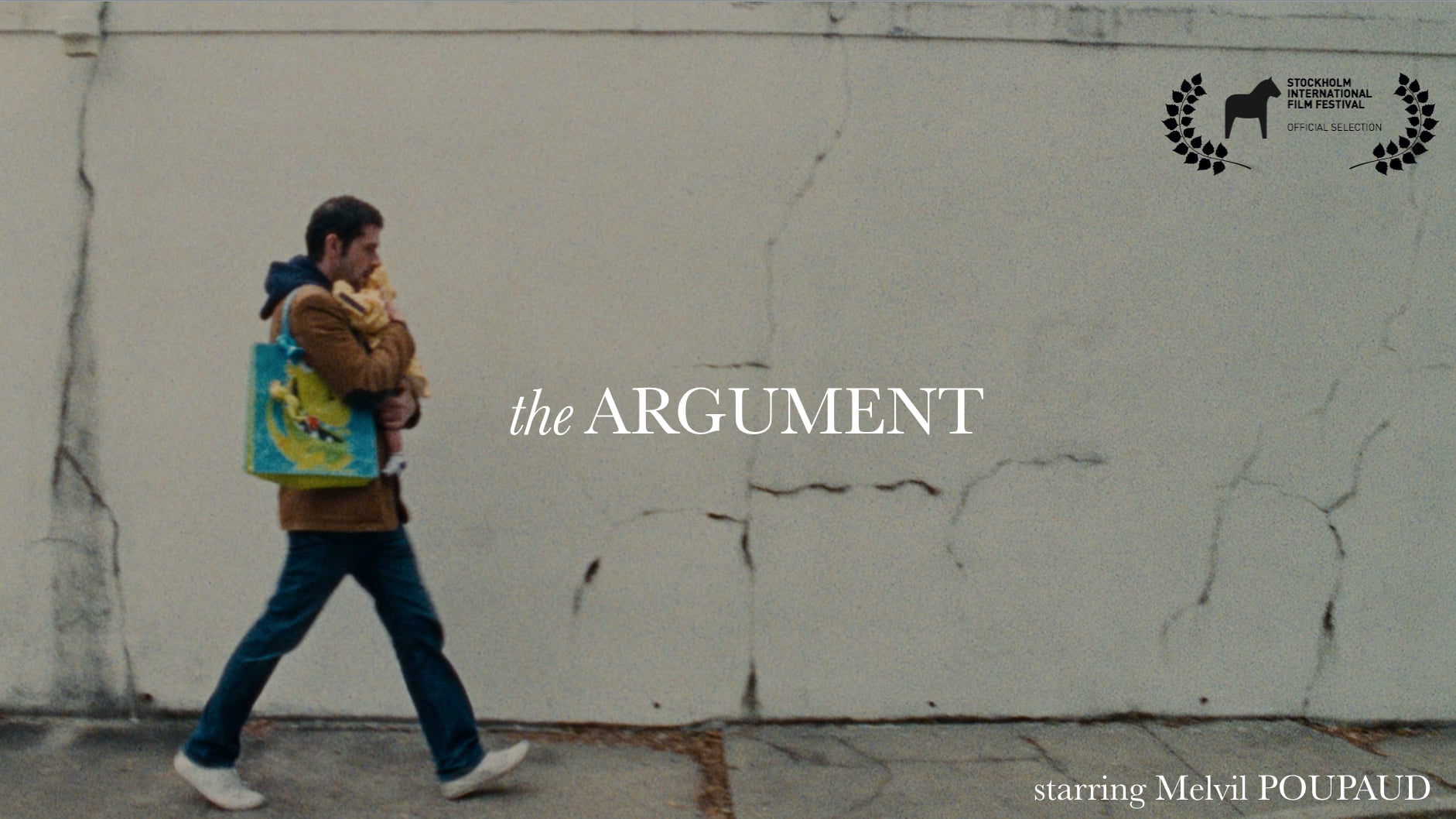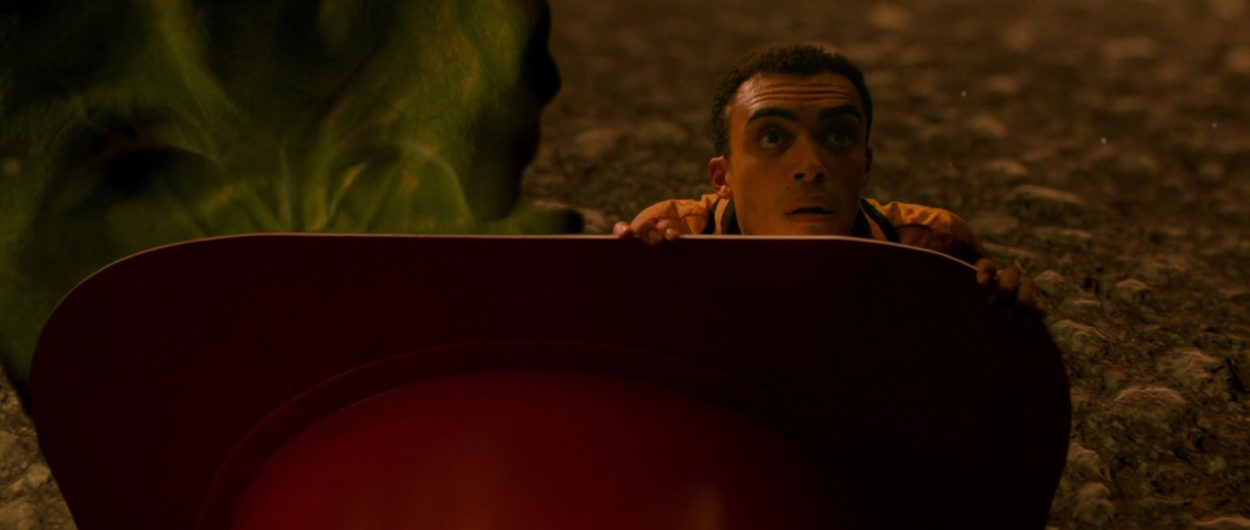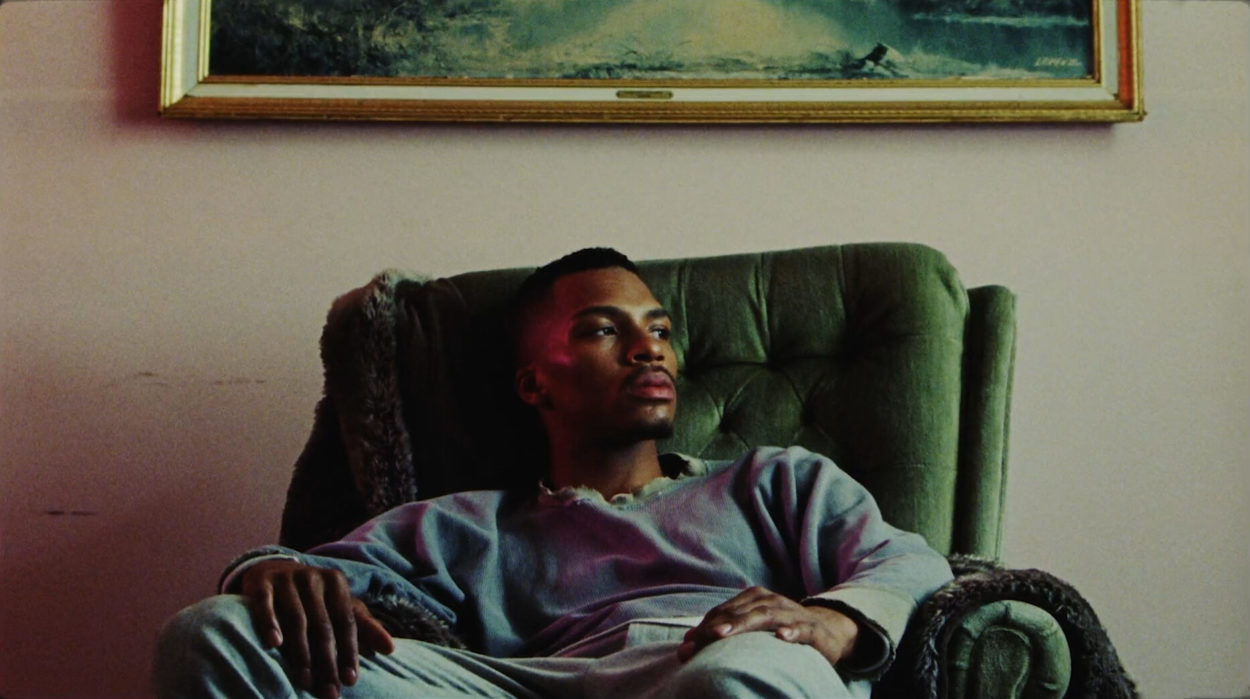You’re the first woman to shoot commercials for Major League Baseball – we particularly like the rapid-fire latest, Ponle Acento. Was it more challenging working to a commissioned brief than on your own narratives?
It depends on the project. Generally, it’s wonderful to have free rein of story ideation, but if a brief is too broad it can be stifling, paradoxically, and often a sign of a client who knows only what they don’t want, not what they do want, which can be tricky. That all being said, it’s rare that a director isn’t given boards or a script when it comes to commercials.
In the case of my second commercial for the Ponle Acento campaign, I already had an established relationship with the folks at MLB and they prompted me for my own story ideas. Thankfully, we all vibed with the first idea I put forth (a narrative about a jersey from conception to completion/field debut), so the rest was quite breezy.
Numb as well as Jealous Sea are great anthems to our inner dialogues when being overwhelmed by pressures or raging emotions. Please tell us about your collaboration with Meg Myers and how it works – are you both on a similar plane?
Numb was my first collaboration with Meg and it was in the process of making that that we realized we were both witchy little weirdos. In ideating for Jealous Sea I bounced some concepts off of her one-on-one before we landed on the idea we ended up pursuing; and what we filmed wouldn’t have been possible had we not an established relationship. I wrote that concept specifically for her style of movement and performance. I’d say we’re definitely on a similar plane but delightfully different within it. It works for us.
Your film for Isaac Gracie’s Reverie is heartbreakingly intriguing. While the imagery matches the sentiments of Gracie’s lyrics what was behind your idea for the narrative?
The melancholic quality of the song immediately impacted me. It has this beautifully romantic languor to it that, at the time, really aligned with how I was feeling in the wake of Trump’s inauguration. Lyrically, the track is quite simple and repetitive; it begets a meditative quality. “I could tell you that I’m doing great; but darling, I’m just not OK,” is, I think, what made the most pronounced impact on me. I felt like none of us (particularly women and people of color) were OK at that time. And that things weren’t going to be OK for the foreseeable future.
Where do you write your scripts – do you work best sitting at the desk in your production company Little Ugly’s office or somewhere else? And do you have a “normal” process to get to the idea that you know is the one you want to shoot?
I work from home, mostly. I’ll concede, I do love working at the Little Ugly office; it’s beautiful and, more importantly, I love the people inside it; they’re like family. But, at my core, I’m a homebody. I’m fortunate to have a quiet space with bright windows, two pups, and a garden; it gives me that feeling of remove from LA that I often crave.
As for process, I’m usually most productive in the mornings and I try to maintain a regular writing practice. That said, I’ve a particular affection for staying in on weekend nights and working or watching films. The important thing, I find, is to just make sure writing and ideating are habits; momentum helps “get to the idea” most quickly and articulately, I find
Once you’ve decided on a concept how do you map out the script? Do you storyboard in detail before the shoot or generally use a shots list – and does this often change in the edit?
Like most, I’m a huge proponent of preparation. The more prepared I feel/the more structured my plan, the looser I feel and more liable I am to improvise on the day. It’s in a balance between off-the-cuff thinking in the moment and intricate planning that real magic can occur.
I’m not a huge fan of storyboarding, personally, unless a scene is technically or compositionally complicated. It always felt a little film schooly for me. That said, if it’s a bigger project or has a lot of VFX/animation, we usually hire a storyboard artist to ensure all departments are aligned. I always shotlist, though. The shotlist is my holiest text on set.
Once I’ve conceived of the idea I’d like to pursue, it’s usually fully edited in my head. So the edit turns into more of a “paint by numbers” process rather than an exploratory one. That said, it’s riveting when an editor shows you things you’d never have imagined were in your footage; and that still happens regularly.
Your film Primrose features yourself and Dawn of the Planet of the Apes star Nick Thurston – viewed with alternate laughs and gasps. What was behind your decision to write this script? And what were the main challenges of making this film?
Primrose was total kismet. Nick, Lowell Meyer (the DP), and I were all in Alaska working on a low-budget commercial competition (the budget was literally $5k, all-inclusive). We camped for the entire shoot and had only one free afternoon to explore in Chugach National Park. During that afternoon I pitched this concept to the guys and they didn’t go for it at all! In fact, the biggest challenge in making Primrose was literally convincing Nick and Lowell to do it. I’d already asked Nick if he’d be amenable to revisiting his ape role, to which he’d said “yes.” Thankfully I was able to change their minds and the rest was smooth sailing.
Please describe your childhood – were you brought up in a creative environment?
My father and mother immigrated from South American (Argentina and Chile, respectively) and I had a classic “third culture” upbringing. My parents arrived with absolutely no money and a tenuous grasp on the language; but their way into the US was by pursuing advanced degrees so they had some footing from which to establish themselves. While neither of my parents are professional creatives, my dad is a diehard cinephile and my mother has a deeply creative spirit. My older brother was also obsessed with film (before he went into medicine), so I was introduced to all sorts of cinemas from a young age. I was in my first play at age 7 and, from then on, I knew that was the general direction I’d pursue. I’m wildly grateful that my family have all encouraged me ever since.
Where was home then and where do you call home now?
I was born and raised in Palo Alto, CA though no one from my family lives there any longer; and my entire extended family remains in South America (Santiago de Chile). My dad has lived in Buenos Aires since his retirement and my mother and brother live in San Francisco. I am based in Eagle Rock in Los Angeles.
What led you to filmmaking? Did you train at film school or on the job?
Since I was in my first play at the age of seven, that set me in the direction of performance arts. My brother taught me how to in-camera edit at the age of eight and then how to use Adobe Premiere at ten. I was making little films here and there all through middle and high school but then went to film camp (like a very cool person) at 15 and learned how to expose, cut, and splice 16mm reversal film. In truth, I don’t have many memories of life before cinema.
Coming from a family of academics I knew I wanted to pursue an advanced degree in film, so I waited until grad school to study film formally. I apprenticed a professional videographer in middle school, but I didn’t have my first real on-set job until 20, when I was a 2nd AC under Rachel Morrison on an indie feature called, appropriately, Palo Alto, CA. After college I still ended up pursuing an MFA at USC but, to this day, nothing better serves a director than time spent on set, in my opinion… and I’ll always be an enthusiastic student of cinema so long as I’m working.
How would you describe your own film language and style?
I love dark, absurdist, elevated sci-fi; worlds in which something is slightly off or inexplicably surreal. Stylistically I incline towards economy; longer, thoughtful takes that may incorporate several shots within themselves. In general, I don’t love super cutty things, even in music video – they so often feel like an apology for shitty footage or a truncated attention span rather than a cinematic choice. So I often push in the opposite direction.
What are you currently working on?
Oh, you know… this and that And writing. Always writing.
Is there anything else you’d like to share?
Just that I’m grateful to share my little story <3 Thank you!
LINKS:

